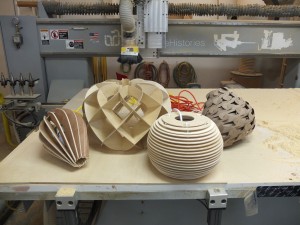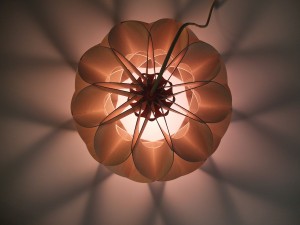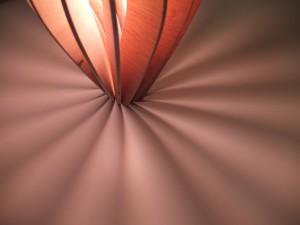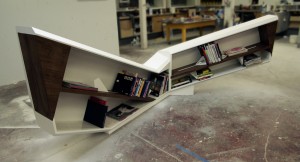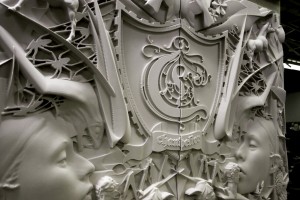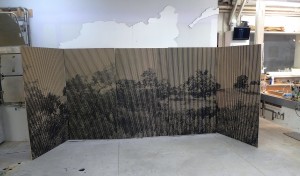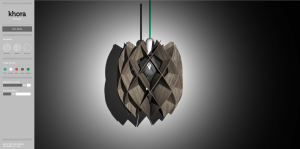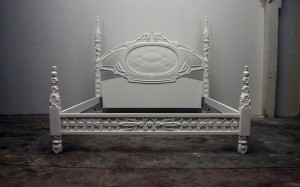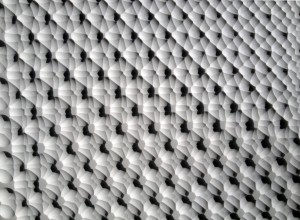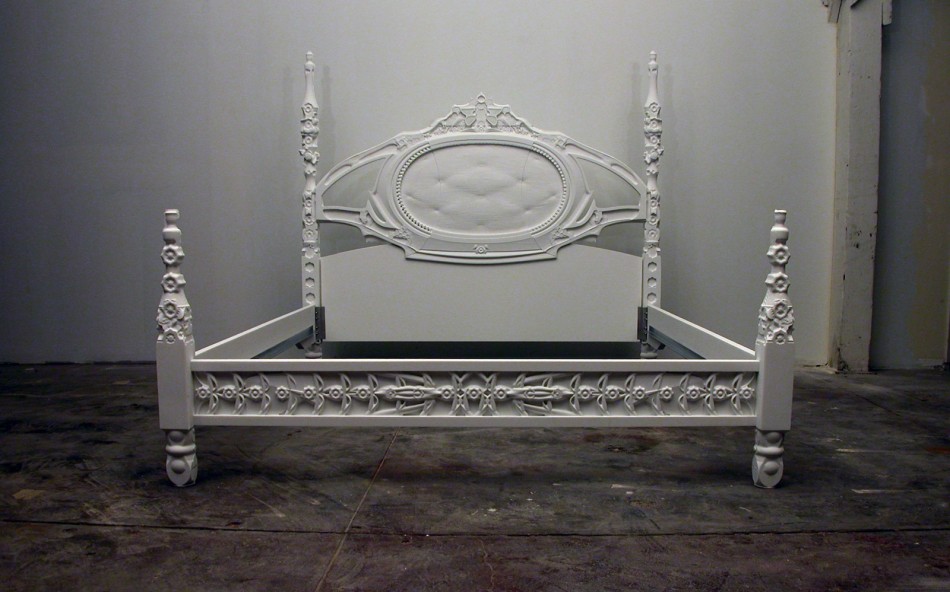
Novelty, Ingenuity, Response: Machine Histories’ Jason Pilarski on Design
Machine Histories is the Los Angeles design collaborative of Jason Pilarski and Steven Joyner. Machine Histories has collaborated with and produced designs for architects and artists including Frank Gehry and Pae White.
Machine Histories’ work will appear in the Life Support show opening November 1st at David Richard Gallery in the Santa Fe Railyard. Lighting designs of their emergent business, Khora, were juried into Design LAB, opening at SITE Santa Fe on Saturday November 2nd. I interviewed Jason Pilarski by email.
Describe what might be in front of you at Machine Histories on a given day.
Currently we are working on a self-isolation chair/dome based on the use of binaural beats, for a startup out of San Francisco. We are working on a sneaker store in Santa Monica for the Los Angeles Design Group. We are working with Neal Feay Studios on patterns for the ceiling of the Broad Foundation. We are working on developing a design for Peter Marino Architects in NYC for a fireplace. We are working with an artist to produce some interesting shaped canvases. It’s busy right now.
Machine Histories’ “About” page expounds on “the potential of ordinary things to confound categorization.” Is a chair no longer a place for sitting if it confounds its category?
“Form follows function” is simply an outmoded assumption. Postmodernism taught us that design is capable of using humor, nonsense, cultural critique, etc. Newer theoretical models such as emergent design have taught us a more comprehensive way of factoring in all forms of nature/form . . . as potential information by which to process the world around us. Really, the designed object isn’t resistant to any of it.
Are we nostalgic for handmade objects because of virtualized experiences?
I think it’s difficult to truly differentiate between the so-called “virtual” and “physical,” both of which we will come to understand as ineffectual constructs used to describe a difference that most likely isn’t even there. When the hand is applied towards design it is as a tool, and it’s hard to discount the use of tools towards production.
If you accept the use of the hand, and the hand used in this way is a form of technology, then why not explore and utilize other technologies such as a pencil, a ruler, or a computer? Computers . . . were produced by our minds as a reflection of our own thinking. You can choose to say the computer is part of nature or we and all of nature are forms of computation. I think either is true.
I’ve been noticing that new modes of fabrication rendering, CNC, etc., lead to building, or at least prototyping, a lot of walls, a lot of dividers, hard surfaces. What is implied by seeing so many structural systems that are not for furniture, which typically provides human comfort?
It’s really interesting that these tools are almost creating these new disciples altogether. You have guys like Marc Fornes that might only do these incredible parametric installations and then you have all these other people who just got a CNC and are cutting some funky plywood room divider — and then you have these other people who might just be 3D-printing jewelry. I noticed at Dwell on Design that there are so many boring uses of CNC and they desperately try to use it as a sign for innovation; but so be it.
I am glad all of this CNC and 3D printing stuff is finally catching on since it enables so many people with many opinions to have a voice and displace these horribly old notions of design as a universal. CNC points to an alternative means of production that has potential even if it isn’t terribly advanced just yet.
Is new design truly accessible by the public?
That was a very respectable desire of modernism. That was really the hope of Adolf Loos in his argument against ornamentation; it was ultimately to wind up with solid goods for the masses. The truth is, it seems capitalism tends to negatively affect that very aspiration of good design for all. Frankly, I would much rather do away with as much mass production and corporate-controlled design as possible.
How will you as designers allow “users” to design new objects?
Our new company, Khora, is really all about trying to maximize the use of technology to enable user-driven design. Our hope is to democratize design and allow the user to get what they think is a good solution based on their needs and views.
The point of Khora is to take a process or product and define it parametrically, and then open up those parameters to the user. This is all done fully in 3D and it all happens using a user-friendly interface that runs in a basic web browser. You don’t have to know anything about CNC, about programming, about making; all you need to know is what you like. We hope that makes for a deeper connection. It will translate into a more sustainable form of products.
Going back to Machine Histories, there’s frequently whimsy and humor in Machine Histories’ products and furniture. For example, Animal-free taxidermy? Is this just design having a casual Friday, or is it design communicating political messages, or is it some third thing?
Sure it’s political, but not so much as a statement in and of itself. What we are trying to do is work differently and have that represent a form of resistance. David Schafer, an artist who we often work with, said we were “punk,” and I’ll take that as a great compliment.
The third thing is probably to maintain a type of isolation from a corporate design world. I think we are kind of isolationists but we can also rationalize this as a form of local production since almost everyone we work with are friends and are in Los Angeles.
To me our method of work is a political act. The work is something else perhaps.

